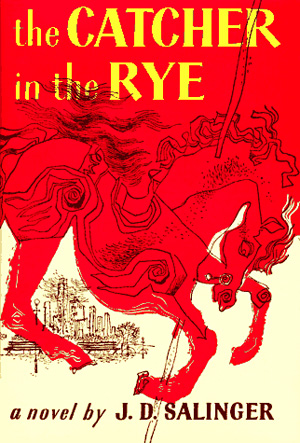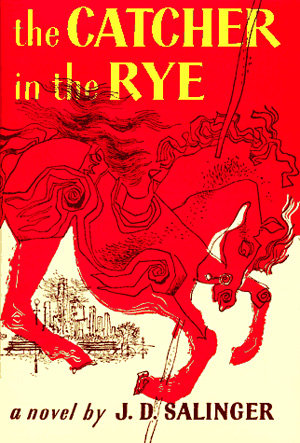 By EMILY O’LOANE
By EMILY O’LOANE
Almost every teenager agrees that life is unfair, filled to the brim with decisions, disillusionment and pressure. In J.D. Salinger’s The Catcher in the Rye, Holden Caulfield joins in on this baffled journey through life and provides a companion for any adolescent struggling with the frustrations that accompany coming of age.
The Catcher in the Rye has sold over 65 million copies since it was first published in 1951. The book was originally written for an adult audience, which explains some of the more risqué parts, such as Holden’s encounter with a prostitute and a pedophilic encounter with one of his teachers.
The book made it to the number one spot on the New York Times bestseller list within the first week it released, and it continues to be a popular choice among readers, especially adolescent readers, today. It has recently risen to prominence again with the death of reclusive author J.D. Salinger, who wrote several other critically-acclaimed short story collections such as Franny and Zooey, none as popular as The Catcher in the Rye though.
The Catcher in the Rye follows Holden during the five days after he gets kicked out of Pencey Academy, a prep school which, according to him, is filled with “phonies” and jerks. The reader follows as he leaves school and takes refuge in a hotel in New York City. The novel is a stream of consciousness adventure, filled with seemingly random scenes that actually provide penetrating insight into a modern teenager’s state of mind. One second Holden will be dreaming about his ex-girlfriend, and the next second he is breaking into his house to talk to his sister.
Though the book on first read may seem aimless, Holden’s account of his five days wandering through New York City accomplishes more than just providing an entertaining and humorous story. Holden’s escapades remind readers of the trepidations and obstacles in their own life. From getting kicked out of boarding school to getting hit on by his teacher, Holden’s cynicism and pessimism in the face of adversity actually provide a sense of hope to the reader. No matter how messed up or confused one is, Holden is in the same situation, blaming the “phonies” in the world right there with you.
Like many teenagers, Holden obviously has little control over his life. All he knows is he hates the world he is in, and his commentary about this world rings as humorously true today as it did in 1951. His rants against “phonies” and the uselessness of school still pertain to modern day high schoolers who are struggling to find their identity in a school full of trendy look-alikes.
Holden doesn’t hold back when criticizing his world; he embodies the confusion and overall teenage angst that will forever dominate adolescent life. Despite the fact that his character was written over 50 years ago, Holden still remains the voice of the modern American teenager.